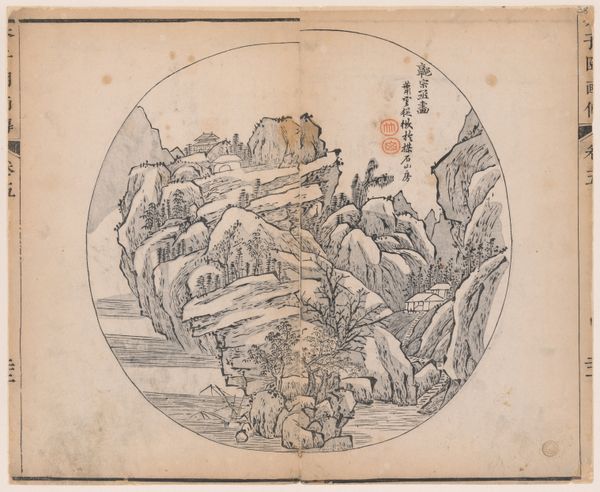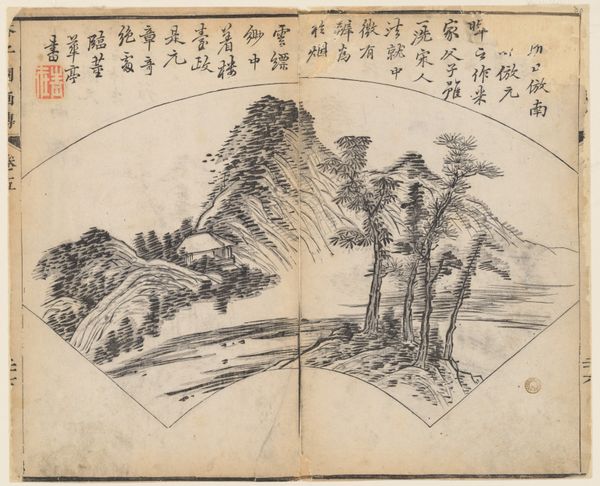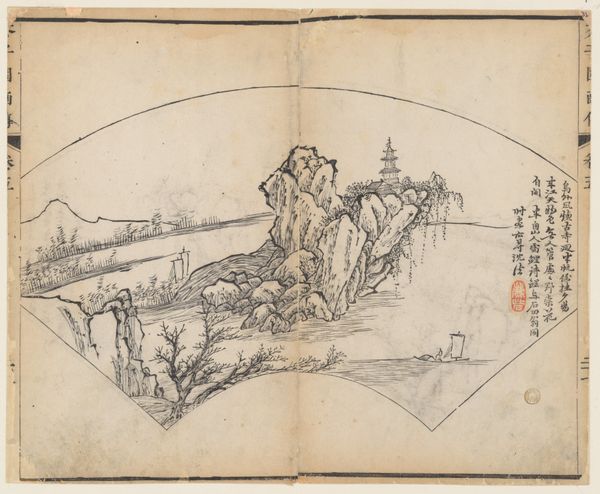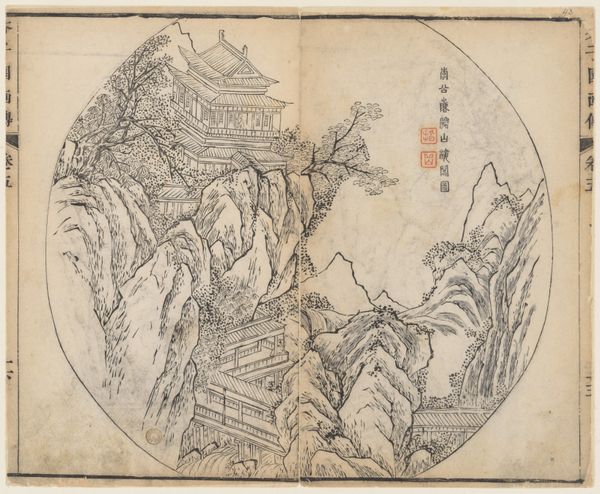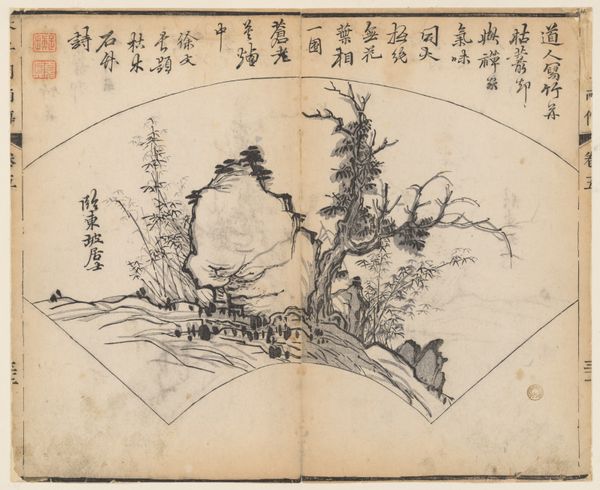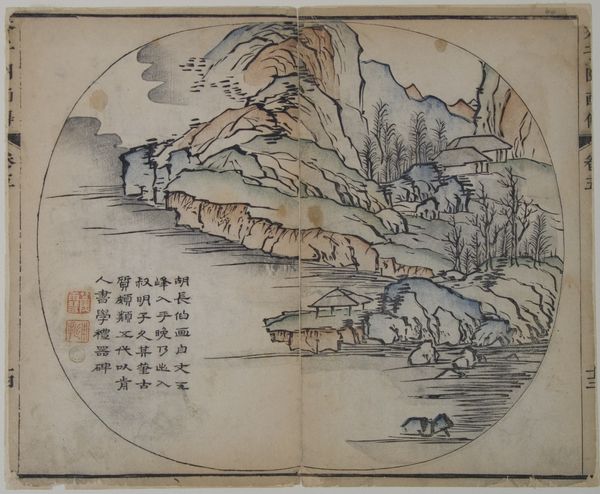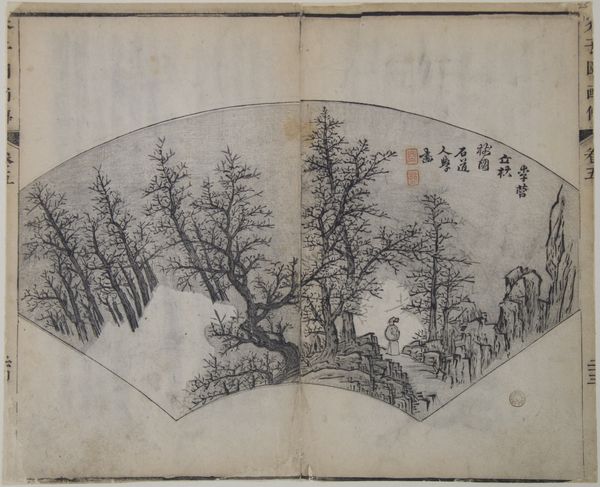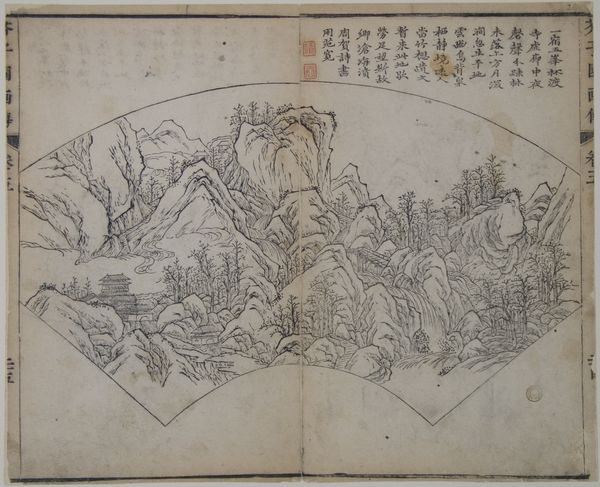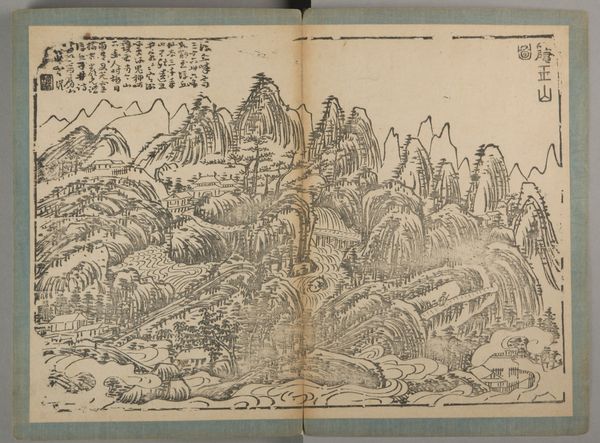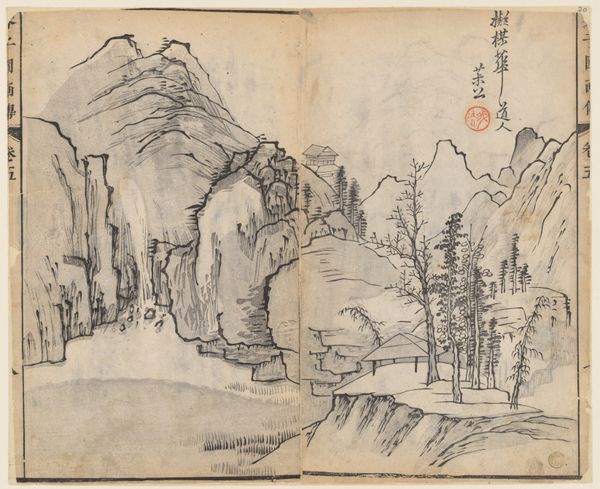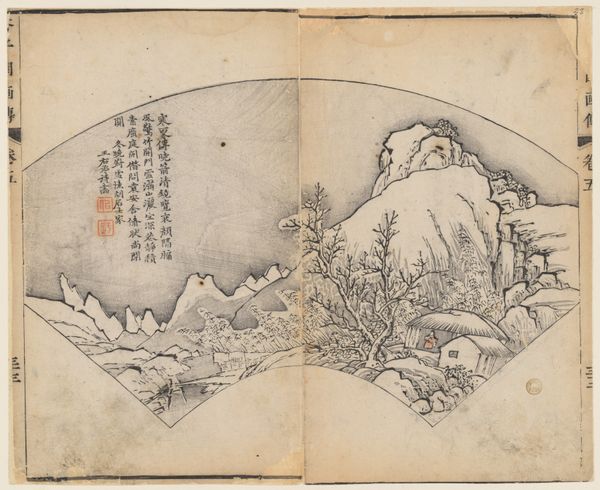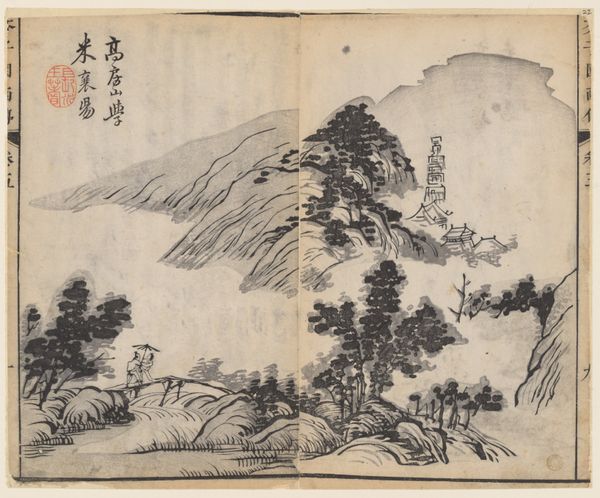
print, ink, woodblock-print, woodcut
# print
#
asian-art
#
landscape
#
ink
#
woodblock-print
#
geometric
#
woodcut
#
calligraphy
Dimensions: 9 5/8 x 11 13/16 in. (24.4 x 30 cm)
Copyright: Public Domain
Curator: Here we have a page from the *Mustard Seed Garden Manual of Painting*, created around 1679. The artist associated with this page is Wang Gai, and it's currently residing here at the Metropolitan Museum of Art. The piece consists of ink and woodblock print on paper. Editor: My immediate reaction is a sense of tranquility, yet with a graphic precision that is really striking. The monochromatic palette adds a sort of timeless quality. Curator: Indeed. This manual played a significant role in educating artists. It wasn't just about technical skill; it embedded philosophical and cultural values, solidifying particular notions of beauty and literati identity. How does this connect with contemporary ideas of art education? Editor: I think it offers a potent counterpoint to current pressures to quantify artistic output or devalue historical art forms. In a cultural moment grappling with authenticity and appropriation, there’s great value in examining artistic traditions rooted in specific cultural knowledge and ethics. It can foster criticality. Curator: Right. We see how this was adopted as models to legitimize cultural narratives in Chinese art. Look how the landscape motif gets deployed to project the persona of cultivated scholar, even linked to governance and authority, as the landscape stands as symbol for harmonious realm. Editor: Considering that access, who were these manuals made for? Were these ideas reaching women and working-class artists? Curator: While aiming to serve as a guide for anyone to refine their style and technique, its price point and distribution might have favored an elite segment of society, furthering existing social structures. The representation and voice remain decidedly of the literate class, embedding notions of propriety along gendered, classed lines. Editor: It raises such crucial questions, thinking about the socio-economic determinants of artistic access and training throughout history and its implications even today. Curator: Yes. Analyzing this in the frame of accessibility highlights ongoing conversations concerning who has access to art making resources and the ways cultural norms impact creativity. Editor: Well, thinking critically about the manual itself, it highlights the systems in art, but at the same time invites reflection about these structures. Curator: Definitely. Its presence within a collection offers space to consider how social and institutional forces continuously frame the production and our engagement with art.
Comments
No comments
Be the first to comment and join the conversation on the ultimate creative platform.
